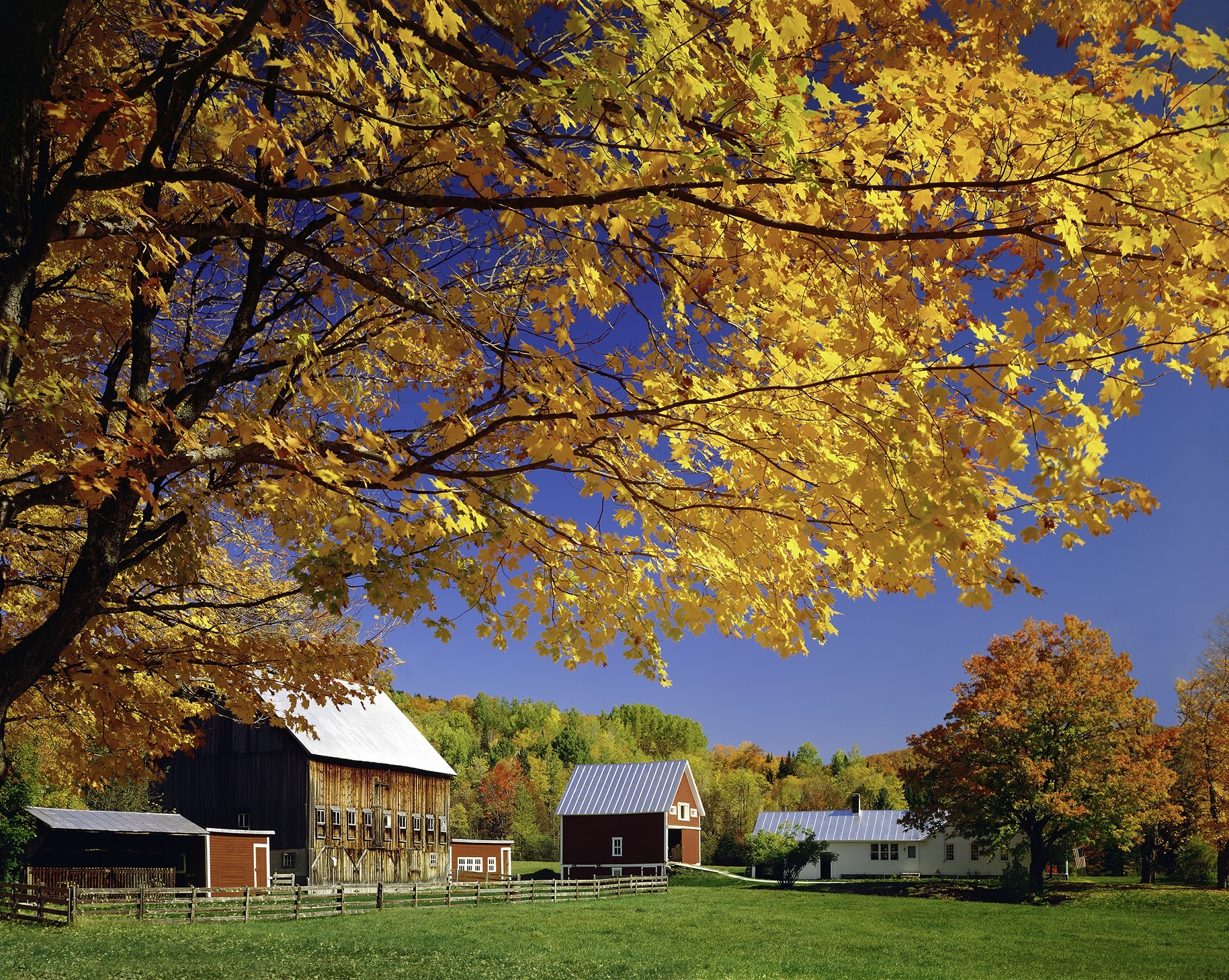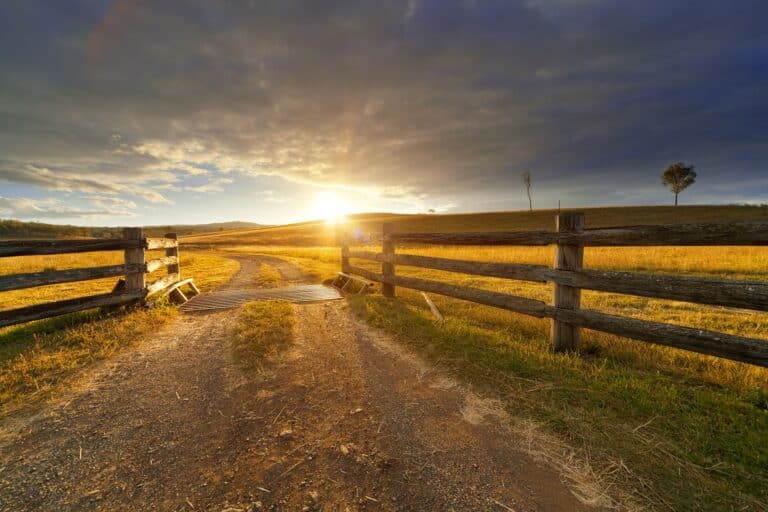Selling rural properties and raw land is a different ballgame than traditional residential real estate. From buyer expectations to breaking down ownership costs, you’ll need to rely on a different playbook to sell land outside of developed environments.
For example, rather than staging a single-family home and learning about the local school district, you might allocate your time to building multilayered promotional experiences for investors, farmers, hunters, and environmentalists—a range of potential buyer groups.
Read on for tips to navigate the unique challenges of selling rural real estate.
Strategies for Selling Rural Property
Let’s start with a few basics—when to sell, at what price, and how much effort to put into preparing the property for sale.
Choose Your Season
Each season has pros and cons to consider when selling rural land. Spring and early summer tend to have the largest buyer pools with higher profit potential, but you’ll have less competition as a seller in late fall and winter.
You may also need to consider seasonality related to:
- Agriculture
- Tourism
- Hunting or fishing
- Extreme weather
For showings and site visits, explore how you can best showcase season-specific views, wildlife, and accessible features of the land, as well as activities both on the property itself and available nearby.
Spruce It Up
Improving curb appeal for rural properties can be a challenge, but the need to wow at first impression is evergreen. In addition to traditional house-and-lawn curb appeal improvement for any residences on the property, consider:
- Repair and repainting of buildings, fences, footbridges, signage, etc.
- Addition of new gravel or white rock to drives or trails
- Trash pick-up and removal from roads leading to the property
- Natural debris clean-up appropriate for the plot (removing fallen trees, etc.)
- General cleaning and maintenance of structures
Consult with your client on what they can accomplish without overinvesting or making decisions that veer from different land use scenarios of new owners.
Price It Right
Correct pricing is a critical need across all types of real estate, but for rural and undeveloped or minimally developed property, getting it right can be a challenge. Overpricing can lead to listings lingering on the market, while underpricing equals lost profits.
Rural property and raw land pricing can be more similar to commercial rather than fully residential property. The usage rights and potential of the property can be as important—or even more so—than its current use and state.
Land Potential
How can the land be leveraged going forward? Depending on location, climate, and current property features, identify how likely the land is to be purchased for:
- Residential or recreational private use
- Farming or ranching
- Resale investment
- Commercial development of various types
- Environmental stewardship
Research is required to be able to respond to inquiries about the land’s potential. Start with research on:
- Mineral and timber rights status
- Active and inactive easements and right-of-way access
- Tenancy agreements, licenses, or contracts to the land
- Zoning or regulatory limitations on building, development, and land use
- Property taxes under different land usage choices
In terms of the land itself, find out about:
- Water table details, floodplains, irrigation, difficult-to-access areas, etc.
- Presence and prevalence of wildlife
- Controls in place for or evidence of noxious weeds and pest animals
- Active and prior conservation projects
- Improvements such as drain tiling or irrigation systems
Also, make sure you can speak to the following:
- Accessibility to or options for sourcing utilities and telecommunications
- The economic infrastructure of the surrounding area for agricultural or commercial purposes
- Proximity of medical, fuel, grocery, and other critical goods and services
- Road maintenance and accessibility in all weather conditions
Marketing Techniques
Real estate marketing isn’t a passive endeavor—even for residential real estate, sticking a for-sale sign in the ground and posting an MLS listing isn’t enough to get the job done right.
For rural properties, walk-in and drive-by traffic isn’t typically a significant factor, and finding the right buyer may mean going far afield from the local audience. Digital presence is a must, along with having the right marketing materials and data in hand.
Digital Campaign
A digital campaign can range from the cost of your time to more sophisticated and expensive endeavors. At its most basic, your campaign should include:
- A primary web page or set of pages on your site or a standalone site
- Social postings across your team’s accounts
- Listings on premier sites such as Land.com
Next, consider:
- Keyword-based SEM (search engine marketing) for each targeted buyer pool
- List-based retargeting to serve banner ads to current or acquired lists
- Social ads targeted by demographic, interests, group membership, etc.
Digital campaigns help you find the right potential buyers through sophisticated targeting and retargeting methods, as well as serve a multi-touch experience that delivers results.
To receive support with marketing or advertising your client’s property, feel free to fill out this form, and a member of our team will assist you in getting started.
Land Use Scenarios
Potential owners and investors may not come to the table with a plan or vision for how the property could be preserved, enhanced, or shared. Scenarios based on the research gathered per the “Land Use Potential” section above can augment a marketing proposal with the property’s potential in addition to its current state.
While detailing a business plan for every conceivable use of the land isn’t an efficient use of your time and expertise, consider crafting a limited set of land use scenarios—farming, vacation cabins, sporting, etc.—that are most likely to appeal to buyers.
To the degree the effort correlates with profit potential, set up sell sheets for a handful of land use concepts that touch on elements such as:
- Key supporting land features and resources
- Primary developments needed
- Top-level financial highlights, i.e., annual profit potential
- Regulatory, community, or financing factors that would support the concept
Once you have an appealing scenario filled out, you can promote it with:
- A unique page on the property’s marketing website
- A targeted online ad campaign with placements specific to the scenario’s audience
- Virtual designs, illustrations, blueprints, or maps that make the use case come to life
Sales Materials
Designing your print and digital sales kit for a rural property depends on the price point, target audience, and land potential. You may want to consider a catalog, booklet, or portfolio that includes:
- Consistent use of a simple website name across all print materials
- Active links on the website to relevant tools, public information, maps, etc.
- Versioning based on land use scenarios and buyer persona
Visualization
Whether a potential buyer is captured from a digital campaign or ends up purchasing without a single site visit, it’s critical to show them well-designed and thorough visual information. For photos, try to:
- Opt for professional photography if possible, highlighting all views and features
- Showcase the property in multiple seasons
- Group and order images logically
You can also include:
- High-quality videos and virtual tours
- Trail cam photos of wildlife
- Drone footage
- Google Earth® current and past satellite imagery1
- County highway maps from state departments of transportation
- Topographical maps
Negotiation Tips
Once you’ve identified a potential buyer, captured their attention, and engaged their interest—it’s time to negotiate. Consider these approaches to sweeten the deal:
Cost Analyses
In appealing to different buyer groups based on land use potential, leverage your research where it benefits your client. See if you can identify2:
- Tax breaks and benefits
- Active and potential income: leases, tenancies, mineral, timber, or hunting rights, etc.
- Figures that are favorable for your property in comparison with similar jurisdictions
- The value of features such as local workforce, highway proximity, historic registry, etc.
- Prior evidence or studies showing minerals, wildlife, or other valuable resources
- For farmable land, details such as soil fertility records and production history
Also present value in terms of what challenges are missing from the land. If no work needs to be done in certain land use scenarios (i.e., to correct water levels, increase utilities, or enrich the soil), then note the savings potential. This total value calculation may entice a potential buyer to compare your site to properties that require more investment.
Bonus Items
Rural land is often sold after clearing auctions have removed machinery, equipment, or even buildings from the site. Make sure you know exactly what will be included in the property sale. Consult with the current owners about pausing the sale of such items so as to use them as bargaining chips or enticement in land negotiation.
Local Networking
Tangible equipment isn’t the only bonus possibility. Can your or your client’s relationships benefit the new property owner?
Many types of land use and stewardship entail building positive connections and supports related to development, preservation, or supplies and services. Consider presenting valuable support, introductions, or behind-the-scenes knowledge as a value-add during negotiation.
How We Can Help
Land.com can help you reach 12+ million engaged buyers looking for property outside of city and suburban boundaries.
We’re a full-service listing partner for your rural property and raw land sales, offering you a dedicated space for video and 3D virtual tours, custom mapping tools, and a comprehensive dashboard to manage your listings and ad campaigns with insightful analytics.
Check out our listings to learn more and propel your real estate service to the next level by signing up today.
Sources:
- Homestead.org. How to Buy Land Very Cheaply. https://www.homestead.org/frugality-finance/how-to-buy-land-very-cheaply/
- Successful Farming. Tips for buyers and sellers of rural land. https://www.agriculture.com/farm-management/farm-land/tips-for-buyers-and-sellers-of-rural-land

